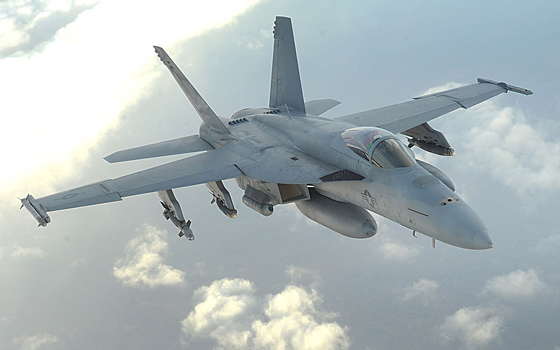The strike conducted by the US Military in the pre-dawn hours Friday morning on a Syrian Air Base was a classic naval bombardment using new style weapons. The weapons employed were 59 Tomahawk Cruise Missiles which travel at sub-sonic speeds, are terrain hugging, and can carry payloads of different types. The payloads employed last week were conventional explosive ordinance of 1000 pounds apiece. The missiles are somewhat misnamed as they use a two stage propulsion system with the bulk of flight time using a jet engine. In essence, they are unmanned, self-guided, self-propelled, airplane bombs. They were launched from the destroyers USS Porter and the USS Ross stationed in the Mediterranean Sea. There was complete destruction of the intended target with nine Syrian airmen killed. A little arithmetic for those so inclined: 59 x 1000 pounds of TNT = 59,000 pounds or approximately 30 tons of explosive ordinance dropped in an area of approximately one square mile. The strike was in response to an attack against anti-Syrian government rebels carried out by the Syrian Air Force three days prior. That attack, in the town of Idlib used chemical weapons, probably the nerve agent Sarin, killing at least 86 people including children.
Of course, naval bombardments are nothing new. Ship to shore attacks have taken place since men first took to the seas in boats. Evolution of weaponry has led to naval guns and ship borne artillery being largely replaced by the more modern weapons just described. Off the top of our heads, the last full scale naval bombardment using old style artillery guns was after the evacuation of US Marines from Beirut, Lebanon in February 1984. Then, the USS New Jersey, fired almost 300 explosive shells at Druze and Syrian positions in the Beqaa Valley east of Beirut in retaliation for the truck bombing of the Marine Barracks earlier in October of 1983.
Commentary on the recent strike from main stream media outlets has been mixed from outright joy at an American President taking decisive action in the face of outrage to pleas for caution. Let us be as straightforward as possible. The strike raises the stakes in Syria significantly. The US action was an attack against Syria, a client state of Russia. Vladimir Putin has made significant economic and military investments in the country and the US strike may be perceived as a strike against Russia. Now, today, there is a flurry of diplomatic activity to put the blame directly on the Syrian government of Bashar al-Assad, and away from the Kremlin. As a reminder, it is not what the US press thinks of the strike that is of importance. What is important in the aftermath is what Mr. Putin thinks and his response.
The US strike on Syrian territory cannot be viewed in isolation. Our military is conducting ground operations against Islamic State in ungoverned Eastern Syria and Northern Iraq with approximately 5000 troops deployed. Further, the strike is not isolated in time either. The United States first became engaged in the region with the Invasion of 2003 under President Bush. Looking across this span of time, we see ebbs and flows of troop levels with the Iraq surge of 2007 and then near complete withdrawal under Obama but with continuing air strikes. Ground troops were redeployed in the last year of Obama’s presidency to their current levels. With the withdrawal of US ground forces, Mr. Putin saw an opportunity to expand his footprint into the region for reasons of economic and military expansionism. Syria is now his client state and he directly supports President Assad.
What will be Mr. Putin’s response? Only Mr. Putin knows and he may not say what he actually thinks. Are his options limited? In a conventional sense they may be. He is unlikely to directly confront the United States with conventional forces of his own, for example making a counter-strike against US ships in the region or directly attacking US ground forces. And in an unconventional sense? Not by a long shot is he limited. In this era of unconventional conflict, Mr. Putin may choose to take his time and make continued US involvement in the region extremely painful. He can do this by giving support to rebel groups in the area including Al-Nusra Front or even Islamic State. He could give further support to Iran and their proxies in the region including Hezbollah. Any one of these groups would be eager to get US Servicemen in their sights. Up until this point, US and Russian operations have scrupulously avoided each other with some level of communication between forces. As first reaction to the US strike, Mr.Putin withdrew his end of that cooperation.
Mr. Putin has expressed through word and deed his long term goals in Syria. Mr. Trump has made no such statements. He may very well be able to incorporate Friday’s strike into a long-range strategic plan for the region. He may choose to articulate any such plan in a public way. Or he may not. To date, he has not articulated such a plan; not on the campaign trail leading up to his election, not during the period of transition, and not since his inauguration. We choose to see Friday’s strike as Mr. Trump staking his territory and making a statement to America’s rivals and enemies; that is, the Obama Era of inaction and appeasement is over. That’s fine. But, he should also roll the strike into a long-term vision of what America is doing in this part of the world or whether America should be in this part of the World, at all. Let’s call it the, as yet unstated, Trump Doctrine.
Diplomatically, America should be in all places at all times. Our military should not. Our military goals in Syria and Iraq should be the destruction of Islamic State. Period. Full stop. Friday’s strike may have complicated that effort immensely. It is now Mr. Putin’s move.

